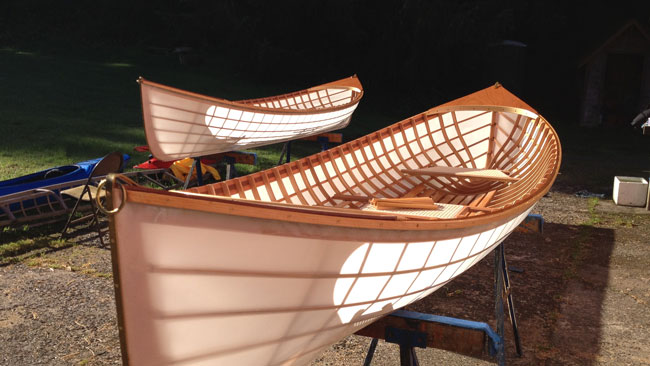
A while back I built two skin-on-frame Adirondack Guideboats following John Gardeners survey of the Virginia. My writeup of those first two boats can be found here. Then I spent five years rowing, fishing, hauling logs, camping, and leaving them out in the rain. When it comes to getting to know a boat, there is no subsitute for use and abuse to find out where the weak points are. During this trial period something of a romance developed, and despite my unkind uses, the guideboats continued to reward me with year after year of sweet gliding across glassy waters and playful handling in the wind and waves. As someone who grew up with boats of all sorts I've come to see anything larger than a kayak as a waste of time and energy, so it was with some surprise that I found myself in love with the Adirondack Guideboat. Brilliantly designed, swift, agile, seaworthy, fits in the back of a pickup and can be carried to the water by one person. It's a perfect boat for estuary exploration, quietly trolling for salmon, and I must say that few things are nicer than a romantic guideboat picnic complete with glassware and Prosseco.
Taking what I learned from the first two boats, this spring I decided to build another two, one for me, and one for sale.
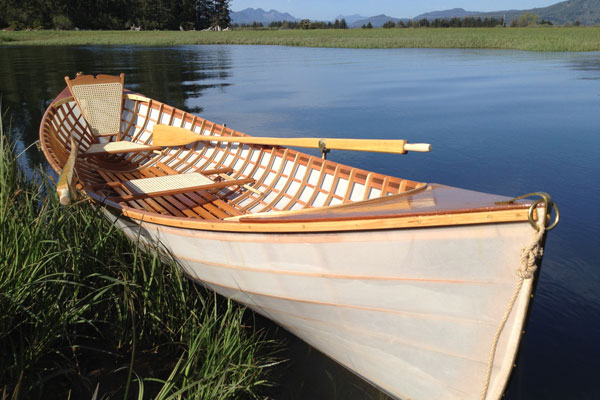
I really liked how the smaller guideboat I made fit nicely in the back of my pickup so I decided to make both of these newer boats just a little bit longer at 13 1/2 feet. I also omitted the last pair of "scribe ribs" to give the boat a slightly fuller midsection, which was common on shorter guideboats but a detail I'd previously missed. I raised the gunwale height by a half inch to give a little more room for big thighed rowers, and I lowered the sheer curve by an inch because it just seemed excessive. I also lowered both the fore and aft seats to the height of the middle seat, which is no less comfortable, and combined with the fuller midsection, provides a reassuring stability. I increased the width of the ribs from 5/16 to 3/8 and added a stringer to stiffen things up a bit. I must admit I have mixed feeling about messing with the traditional geometries of such a highly refined craft, but I put my time in to decide what I wanted and I think the result can still wear the Adirondack Guideboat mantle without too much shame. These new modified boats are perfect to carry one or two people, as well as a nice picnic and maybe a dog. The boat weighs 47 lbs.
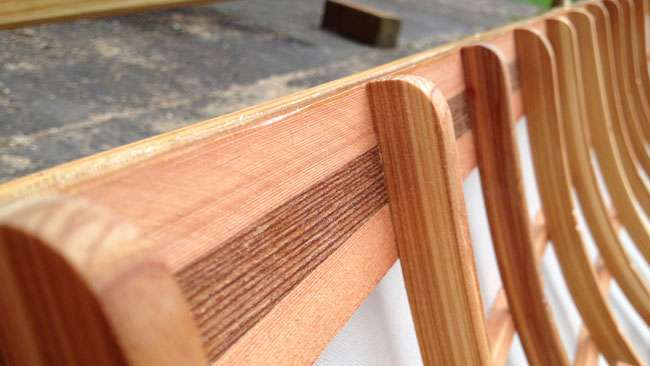
The gunwales and ribs are both laminated red cedar, ribs near the ends are 12 plys!
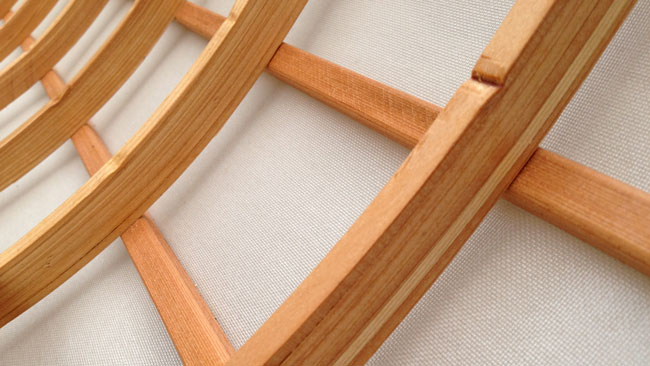
I did accidentally dent the ribs with clamps while attaching the stringers, it's a shame, but I'm over it.
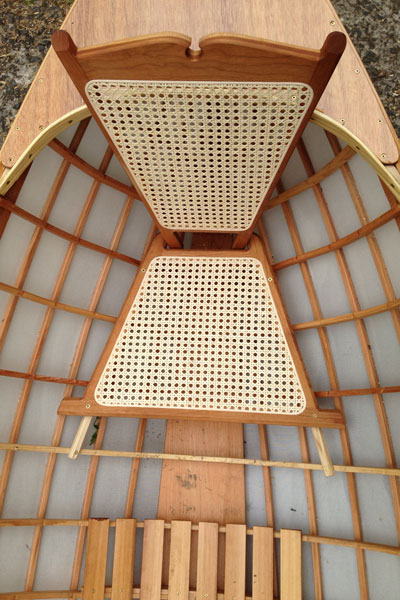
After hand-caning the seats on the last boat I decided I would never do that again, so I bought these from Sandy Point Boat Works.
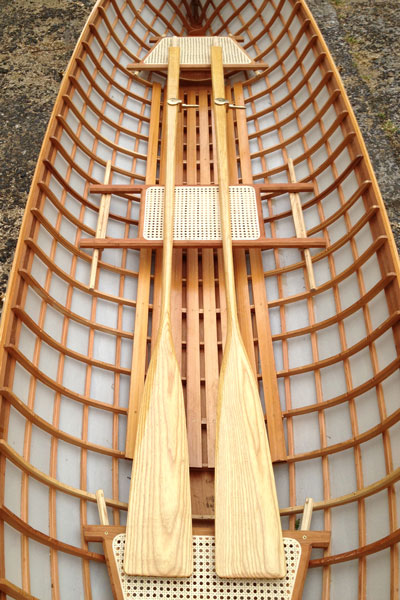
The oars are an exact copy of the Grant Pattern oar, very thin and painstaking to make. Originally soft maple, I chose Ash, which is much stronger, but also much harder to carve. They are finished with seven coats of spar varnish.
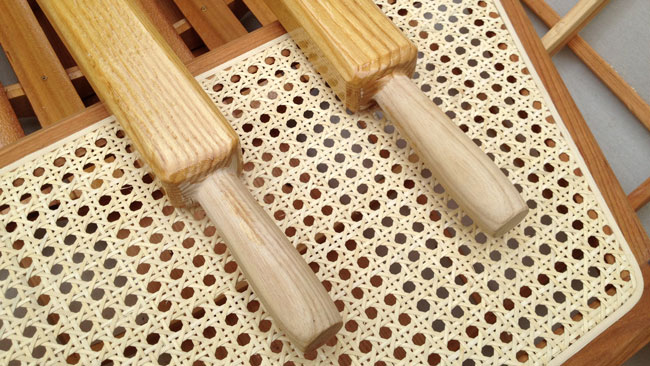
The handles are left unvarnished to avoid raising blisters.
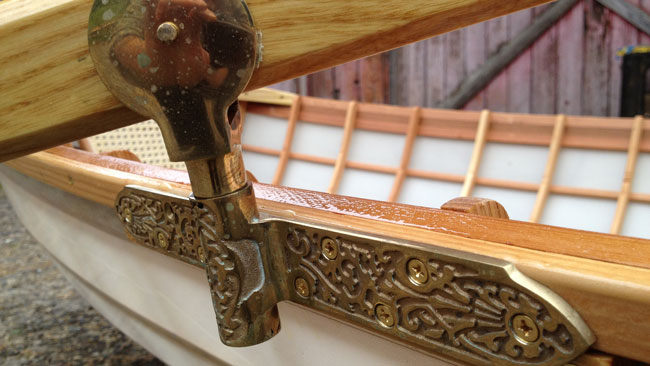
An indulgence at three-hundred dollars per boat, I ordered original bronze guideboat hardware from Shaw and Tenny this time.
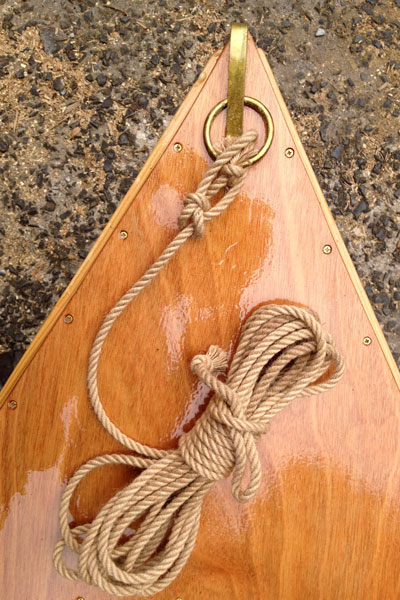
As a finishing touch I added a high quality natural fiber Jute rope painter to compliment the aesthetic of the rest of the boat. I had to order that rope from Japan.
This boat is for sale for $5000 dollars. That's a good deal, I don't make them very often. Contact me if you're interested.
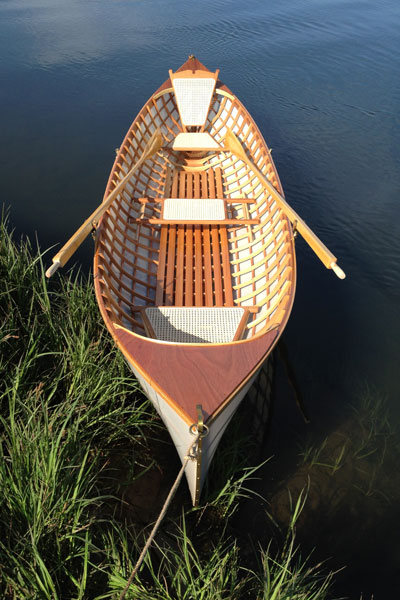
Since building my first Guideboats it's been hard to figure out what to DO with this wonderful skin-on-frame adaptation. Unlike a kayak, these are difficult to build. Skin-on-frame makes it light years faster than traditional planking, but still, each boat takes two weeks to build and several thousand dollars in materials. Building more than two at once is out of the question, so a class isn't entirely practical. I've decided that how I can share this beautiful design is to invite one or two students to come build a boat in the off season for about 3500 bucks, I'll build another alongside and then I'll sell that one, together that almost pays me what I need, and gives opportuity to people who really want to buy or build one of these. Contact me if your are interested in building or buying a boat.
I recieve a ton of correspondence about these boats so before you email me to ask how to build them, please read the following:
The frame is made just like the Guideboat Virginia from John Gardeners survey in the book The Adirondack Guideboat by Kenneth and Helen Durant. My ribs are 3/8 x 3/4, stringers are 7/16 square, and the gunwales are 7/16 x 2 1/4 laminated into a six inch deep curve. The boat is screwed together with small brass screws and the stringers are nailed on with tiny stainless ringshanks. The skin is 840 denier Jr Ballistic Nylon covered with a 2 part polyurethane, available from Skinboats.com. I do NOT have the original CAD file that I made the laminating jig with. I do NOT have a full size drawing. Those things left with the girl who drew them. You can loft the rib templates by hand from offsets in the book. Building this is going to be a bit of work, and it should be, such an amazing boat deserves that sort of effort.
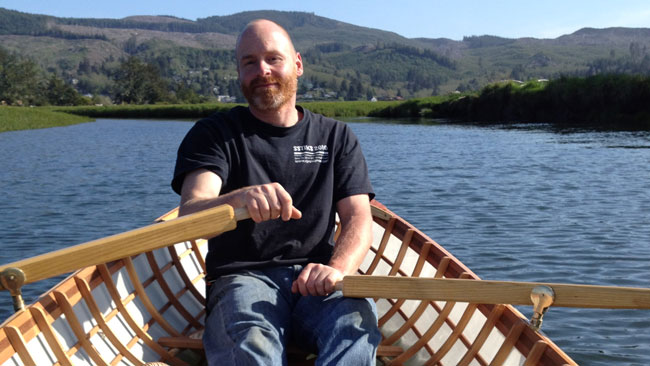
Back to Cape Falcon Kayak